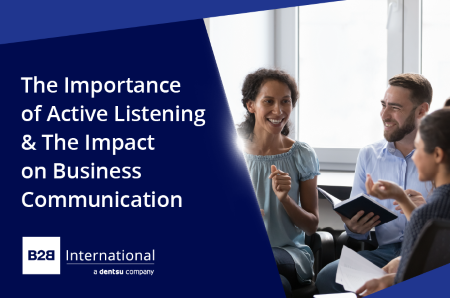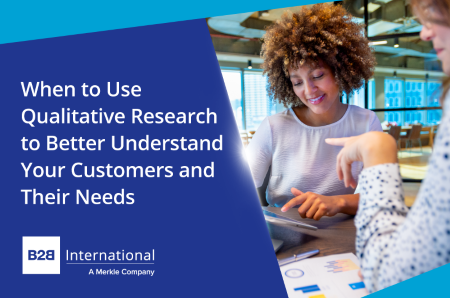
Whilst we all like to think we are good listeners, it’s not always the case that we consistently actively listen to conversations happening around us, both in our personal and work life. The importance of active listening has been highlighted as key in improving communication that we have with other individuals, and its impact on the workplace has seen only positive effects.
When we practice active listening, it is essential that we pay attention to all forms of communication – both verbal and non-verbal – and ensure that we are focused on the message that is being conveyed and the emotions in which this is being shared. Miller & Rollnick (2012) state that we must “make an effort to show our understanding of the message, acknowledging the speaker’s internal frame and reflecting back on their emotions”.
Active listening principles
There are three key areas to consider when conversing with others to try and demonstrate that you are actively listening:
-
Lead with empathy not sympathy
As individuals, we want to demonstrate empathy when communicating. We need to be able to put ourselves in someone else’s shoes and look at things through their perspective without putting our own experiences onto theirs. Showing sympathy, although can somewhat come across as trying to be supportive, this causes us to push our own thoughts onto someone else’s experiences and only considers our own internal frame whilst refuting theirs.
-
Self-awareness
It is essential that we identify our unconscious biases towards other individuals when communicating. Whilst we all carry pre-conceived judgements and stereotypes about others, we need to ensure that this does not negatively impact the way that we communicate and actively listen.
-
Active listening skills
Active listening skills takes into consideration the three key forms of communication: body language, non-verbal cues, and verbal cues. When communicating with others – particularly in face-to-face scenarios – it is important to consider the way our body language can impact the effectiveness of the communication. Keeping an open posture is important to be perceived as more friendly and willing to listen, as well as leaning forwards to show your engagement with the speaker, keeping eye contact to demonstrate your focus, and having a relaxed body language to put the speaker at ease. Non-verbal cues such as facial expression and hand gestures are also used to demonstrate engagement with the speaker. Verbal cues involve the spoken words or sounds we use to communicate with others. We need to be mindful that the tone, speed and volume in which we speak can impact the way we convey our messaging.
These three considerations are important to think about when we communicate. However, when we look more specifically at active listening, there are additional more focused skills that have been proven to improve communication, not just in your private life, but within business communication.

Active listening skills:
-
Minimal encouragers – these are short or non-vernal cues used by a listener to demonstrate understanding and focus on what the speaker is sharing. Examples include head nodding, saying “yes”, “no”, “umm”. These basic and easy techniques are proven to encourage the speaker to elaborate further and delve deeper into their own thoughts and understanding.
-
Silence – silence involves intentional pauses or periods of silence during the conversation to allow the speaker time to reflect on what they have shared and allow time for them to process their thoughts and feelings. It’s important to not interrupt and give someone the space to think.
-
Paraphrasing – this involves summarizing what the speaker has shared but in your own words. This offers clarity on the speakers experiences as although the words used are different from the speakers, the meaning is the same and it shows a clear understanding of what has been shared. This makes the speaker feel reassured that they have been heard and understood.
-
Reflecting – reflecting involves mirroring the speakers’ thoughts and feelings using the specific words they use. When using this technique, it involves reflecting one word or a short phrase. This can be a powerful technique when used appropriately and helps the speaker focus and elaborate further on their feelings.
-
Effective questioning – the use of open and closed questions can be used to demonstrate clarity on what is being shared. The listener can gather extra details on the context of the circumstances and helps to navigate the discussion and encourage more reflective techniques.
-
Summarizing – summarizing can be done at the beginning or the end of a conversation to clarify the context and give a focused, concise overview of the key details of the discussion. This makes it clear to the speaker that the listener has engaged throughout the discussion and is able to reflect back the key details.
These skills have been proven to be effective in the business context. For example, when these active listening techniques were measured and researched in the workplace at Google, they found that employees felt more comfortable sharing ideas and feedback knowing that they would be heard and respected. Teams that practiced active listening reported higher rates of innovative ideas, which was attributed to a more inclusive environment where all members felt valued and were encouraged to contribute. Active listening helped to facilitate better collaboration and promoted teams to build on each other’s ideas when working towards a common goal. This led to a reduction in turnover rates, particularly for teams that promoted active listening skills more frequently.
Effectiveness In Market Research Practices
These skills have direct business benefits and have also been demonstrated to reduce inaccuracies within business communication, as well as improve conflict resolution. Not only does it have more general business benefits, but it has direct benefits for market research more specifically. This includes enhancing client relationships, improving data quality, and fostering a collaborative environment.
Enhancing client relationships
By actively listening to clients, this can help to build stronger relationships and build mutual trust by making the client feel valued and understood. It can also help researchers to more accurately understand the specific needs and goals of a client. Particularly in the early enquiry and kick off stages of a project, the client needs to be listened to for the researchers to be able to interpret the underlying messages, emotions and needs of the client and the specifics of the project. This will ensure that the research design and the project itself will align strongly with the client’s objectives, leading to more relevant and actionable insights.
Improving data quality
Active listening is essential for interviews and focus groups to ensure that we probe deeper into the responses of the decision makers. This means we can gather more rich insights and provide a more comprehensive report to the client. An interviewer needs to be able to use these active listening skills so that the interview itself has a good flow and is not a rigid discussion. It will help to uncover more detail and nuanced information. In turn, this will also keep the respondent more engaged as the interview will come across as more of a conversation and relevant to what they share on the different topics.
Fostering a collaborative environment
Active listening promotes better collaboration and interaction across the teams. This not only allows team members to feel more valued and respected but will lead to more innovative idea sharing as the teams are more likely to come forward and share ideas. In team meetings, a culture that adopts a more active listening environment enables more viewpoints to be considered, fostering a more creative problem-solving mindset and improved project outcomes.
To discuss how our tailored insights programs can help solve your specific business challenges, get in touch and one of the team will be happy to help.


